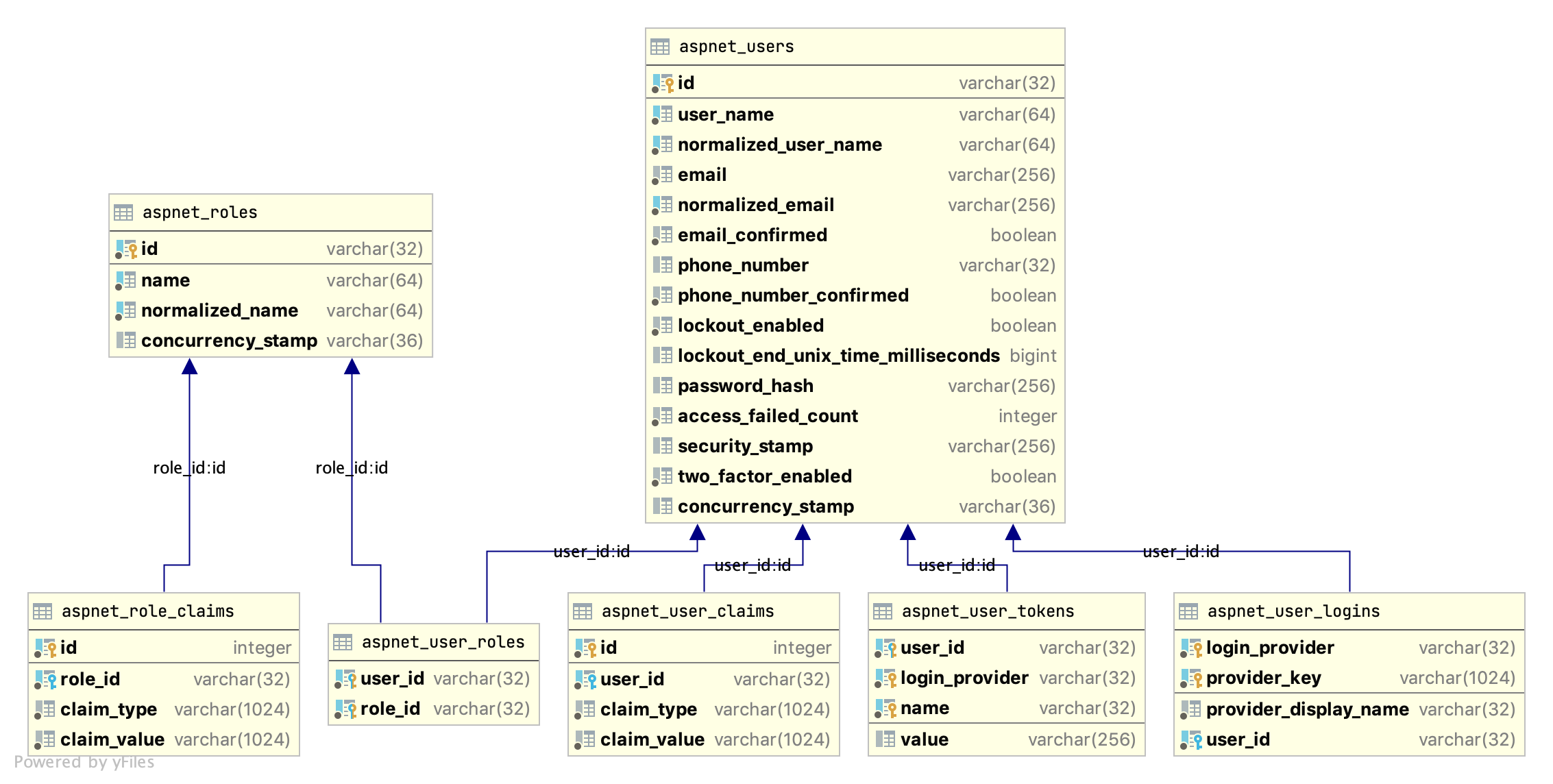ASP.NET Core Identity Provider implemented with NHibernate
Nuget package:
- 9.0.x is compatible with .Net 9.0.x;
- 8.0.x is compatible with .Net 8.0.x;
- 7.0.x is compatible with .Net 7.0.x;
- 6.0.x is compatible with .Net 6.0.x;
- 5.0.x is compatible with .Net 5.0.x;
- 3.1.x is compatible with .Net Core 3.1.x;
- 3.0.x is compatible with .Net Core 3.0.x;
dotnet new mvc --auth Individualdotnet add package NHibernate.AspNetCore.Identity
dotnet add package NHibernate.NetCore
NHibernatewill be installed automatically.
-
Use the sql scripts in
databasefolder to create aspnet identity related tables, only support postgresql, mssql and mysql now;If you want other database support, please let me know, any issue, pull request is welcome!
-
Config NHibernate to use your database;
public class Startup {
public void ConfigureServices(
IServiceCollection services
) {
// Remove EFCore stores.
// services.AddDbContext<ApplicationDbContext>(
// options =>
// options.UseSqlite(Configuration.GetConnectionString("DefaultConnection")));
// services.AddDefaultIdentity<IdentityUser>()
// .AddEntityFrameworkStores<ApplicationDbContext>();
// Add Hibernate stores
var cfg = new Configuration();
var file = Path.Combine(
AppDomain.CurrentDomain.BaseDirectory,
"hibernate.config"
);
cfg.Configure(file);
// Add identity mapping based on dialect config (dialet must contains
// PostgreSQL, MySQL, MsSql or Sqlite)
cfg.AddIdentityMappings();
// using default xml mapping.
cfg.AddAssembly(typeof(Startup).Assembly);
// using `NHibernate.Mapping.ByCode`, please comment the line above,
// and uncomment line flowing lines;
// var modelMapper = new NHibernate.Mapping.ByCode.ModelMapper();
// modelMapper.AddMapping<WebTest.Entities.AppRoleMapping>();
// modelMapper.AddMapping<WebTest.Entities.AppUserMapping>();
// modelMapper.AddMapping<WebTest.Entities.TodoItemMapping>();
// var mappings = modelMapper.CompileMappingForAllExplicitlyAddedEntities();
// cfg.AddMapping(mappings);
services.AddHibernate(cfg);
services.AddDefaultIdentity<WebTest.Entities.ApplicationUser>()
.AddRoles<WebTest.Entities.ApplicationRole>()
.AddHibernateStores();
}
}Note: When using with SqlServer, you need add
System.Data.SqlClientpackage to your project.
For more detailed samples, please look at the WebTest project.
Special thanks to the following individuals, organisations and projects whose work is so important to the success of NHibernate (in no particular order):
